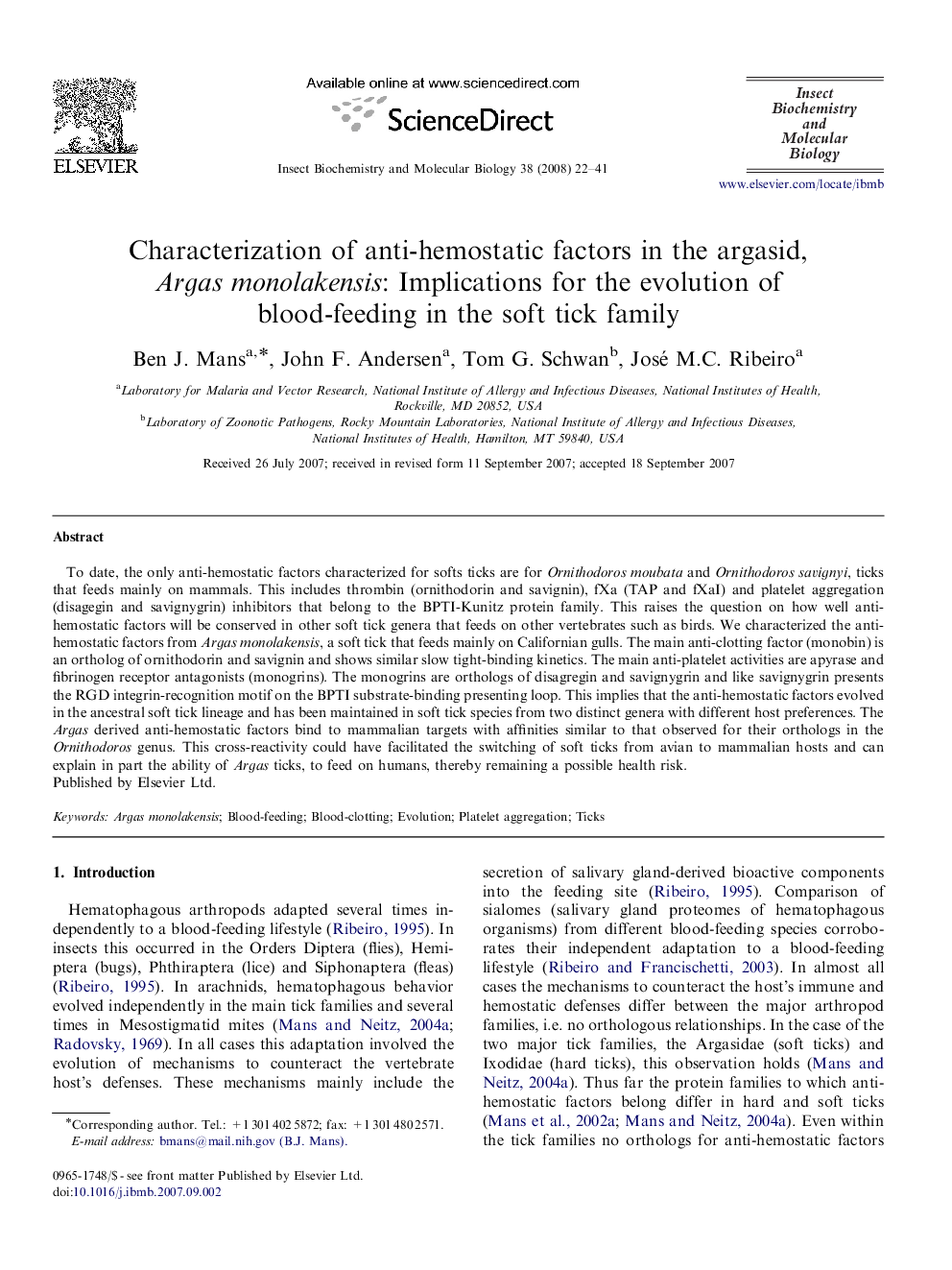| کد مقاله | کد نشریه | سال انتشار | مقاله انگلیسی | نسخه تمام متن |
|---|---|---|---|---|
| 1982797 | 1062318 | 2008 | 20 صفحه PDF | دانلود رایگان |

To date, the only anti-hemostatic factors characterized for softs ticks are for Ornithodoros moubata and Ornithodoros savignyi, ticks that feeds mainly on mammals. This includes thrombin (ornithodorin and savignin), fXa (TAP and fXaI) and platelet aggregation (disagegin and savignygrin) inhibitors that belong to the BPTI-Kunitz protein family. This raises the question on how well anti-hemostatic factors will be conserved in other soft tick genera that feeds on other vertebrates such as birds. We characterized the anti-hemostatic factors from Argas monolakensis, a soft tick that feeds mainly on Californian gulls. The main anti-clotting factor (monobin) is an ortholog of ornithodorin and savignin and shows similar slow tight-binding kinetics. The main anti-platelet activities are apyrase and fibrinogen receptor antagonists (monogrins). The monogrins are orthologs of disagregin and savignygrin and like savignygrin presents the RGD integrin-recognition motif on the BPTI substrate-binding presenting loop. This implies that the anti-hemostatic factors evolved in the ancestral soft tick lineage and has been maintained in soft tick species from two distinct genera with different host preferences. The Argas derived anti-hemostatic factors bind to mammalian targets with affinities similar to that observed for their orthologs in the Ornithodoros genus. This cross-reactivity could have facilitated the switching of soft ticks from avian to mammalian hosts and can explain in part the ability of Argas ticks, to feed on humans, thereby remaining a possible health risk.
Journal: Insect Biochemistry and Molecular Biology - Volume 38, Issue 1, January 2008, Pages 22–41